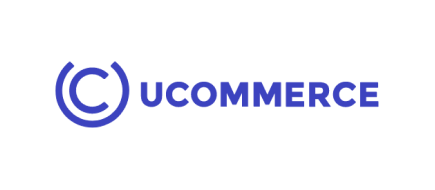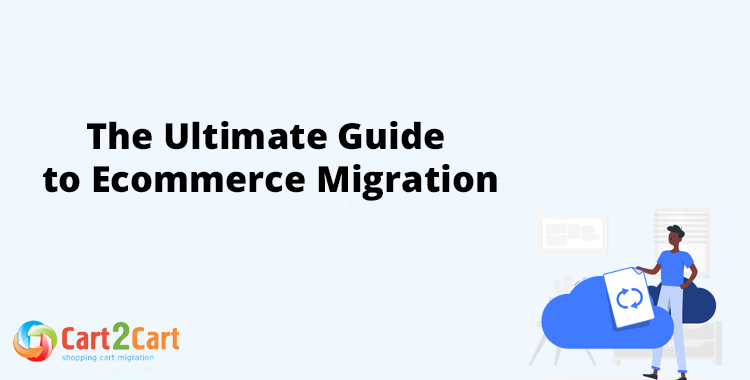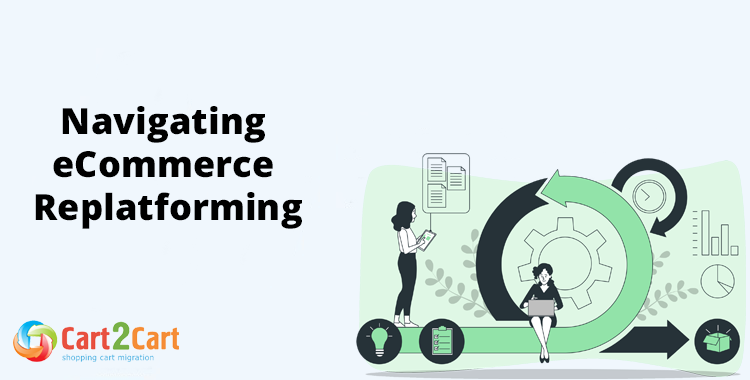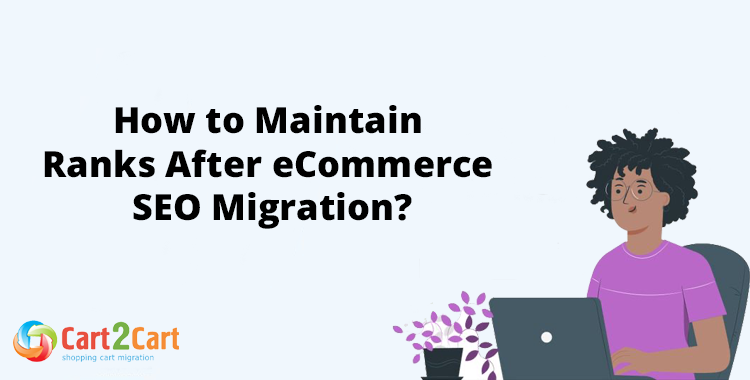uCommerce Migration
Looking for a seamless uCommerce Migration? Cart2Cart provides a fully automated, secure, and fast solution to migrate from uCommerce to a new platform, typically completed in just a few hours. We guarantee zero downtime for your source store during the entire migration process, ensuring no disruption to your sales. Trust Cart2Cart for a comprehensive transfer of all your crucial data, including products, customers, orders, SEO URLs, and more. Our expert system ensures a safe and worry-free transition, letting you focus on growing your business.
How to Migrate to uCommerce
This step-by-step guide details how to securely migrate to uCommerce from any other e-commerce platform using Cart2Cart, ensuring complete data integrity for your online storefront.
- Register and Initiate: Create a Cart2Cart account to begin your platform switch. This initial step is free and takes only a minute.
- Connect Your Source Store: Provide the credentials for your current platform to allow secure API access for the data transfer.
- Connect uCommerce Target Store: Prepare your data file according to uCommerce's CSV import requirements. This file-based method ensures you can structure all your data for a smooth transition.
- Select Data and Options: Choose which data entities to move, including products, SKUs, and customer orders. Configure crucial options like 301 redirects to preserve your SEO rankings.
- Run a Free Demo Migration: Launch a free test transfer to move a limited set of your data. This allows you to check the results directly in your new uCommerce store before the full replatforming.
- Launch the Full Migration: Once satisfied with the demo, start the full migration. The process runs on our servers, ensuring no downtime for your business.
Pro-Tip: Migrating to uCommerce via this method is a file-based process. This means your data will be imported from a CSV file, and no special plugins are required on the uCommerce side.
Automated migration
Just set up the migration and choose the entities to move – the service will do the rest.
Try It Free
Data Migration Service Package
Delegate the job to the highly-skilled migration experts and get the job done.
Choose Package
What data can be migrated from/to uCommerce
-
Products
-
Product Categories
-
Manufacturers
-
Customers
-
Orders
Choose all the extra migration options and get 40% off their total Price
We’re committed to protecting our customers’ data security. Check out our Security Policy
The Cart2Cart service has all the necessary functionality to migrate store databases on uCommerce of any size and complexity. Below are the most popular migration directions among our customers:
Help Center
Let’s figure out everything about uCommerce migration through
Cart2Cart.
Discover our checklist, related articles, and answers on frequently asked questions.

 June 7, 2023
June 7, 2023 The Ultimate Guide to eCommerce Migration: How-To Directions and Best Practices
Read full articlePay only for what you migrate - the cost depends on the number of records to be moved
Get Your Instant uCommerce Migration Estimate
Discover your precise uCommerce migration cost instantly with our transparent calculator. Get a clear understanding of your uCommerce migration pricing and plan your budget confidently, ensuring a smooth transition to uCommerce with no hidden surprises regarding your final uCommerce migration price.
uCommerce Monthly Pulse: Deepening the .NET Integration and Fortifying the Enterprise Core
This month, uCommerce eschewed broad market announcements in favor of a series of strategic enhancements that reinforce its core value proposition for enterprise clients. The narrative is not one of explosive growth, but of deliberate, calculated fortification. The platform is doubling down on its identity as the premier, deeply integrated commerce engine for the .NET ecosystem, focusing on performance, developer empowerment, and security—the foundational pillars that matter most to its sophisticated user base.
Market Position: Dominance in the Integrated Commerce Niche
While uCommerce does not compete for the same headlines as all-in-one SaaS platforms, its strategic position remains formidable. Our analysis indicates that uCommerce continues to be the preferred commerce solution for new enterprise-level builds on CMS platforms like Umbraco and Sitecore. This deep entrenchment within the .NET ecosystem is its key differentiator. Rather than pursuing horizontal market share, uCommerce is solidifying its vertical leadership, making it the default choice for organizations that prioritize seamless content-and-commerce integration over standalone solutions. This strategy ensures high-value, long-term client relationships and a defensible market moat.
Infrastructure Stability: Optimizing for Complex Catalogs
The recent maintenance release, version 9.7.2, delivered a crucial under-the-hood enhancement focused on core query performance. Specifically, the update refines how the platform handles complex LINQ queries against large product catalogs with extensive variant data. The "so what" for business leaders is a tangible improvement in speed and responsiveness for B2B and B2C sites with thousands of SKUs. For a manufacturer with a complex parts catalog or a distributor with nuanced product attributes, this translates directly to a better user experience, reduced bounce rates on category pages, and ultimately, a higher conversion potential for high-stakes transactions.
Expanding the Developer Canvas: New Webhooks for Composable Architectures
In a significant move for developers, uCommerce has expanded its API with a new suite of webhook endpoints for order status changes and inventory level updates. This is more than a technical update; it is a clear signal of the platform's commitment to modern, composable commerce. These webhooks empower developers to build more resilient, event-driven integrations with external systems like ERPs, PIMs, and third-party logistics (3PL) platforms. For a business, this means a more agile and interconnected technology stack, reducing the reliance on brittle, batch-based data synchronization and enabling real-time operational visibility.
Flagship Advancement: The Headless Starter Kit for Umbraco
The most significant release this month is undoubtedly the new Headless Starter Kit for Umbraco Heartcore. This strategic tool provides a production-ready boilerplate for developers, dramatically accelerating the time-to-market for building composable commerce experiences. It solves the "blank page" problem by providing a well-architected foundation that connects uCommerce's powerful backend with a modern frontend framework. This move directly addresses the growing enterprise demand for headless architectures, allowing brands to deliver highly customized customer experiences on web, mobile, and IoT devices without compromising on the robust commerce logic uCommerce is known for.
Fortifying the Transaction Layer: Proactive PCI 4.0 Compliance
On the security front, uCommerce has successfully completed its audit for PCI DSS 4.0 compliance, well ahead of the 2025 deadline. For any enterprise processing significant transaction volumes, this is a critical assurance. Achieving this new, more stringent standard of payment security proactively demonstrates a deep commitment to protecting merchant and customer data. This is a powerful selling point for CIOs and CISOs, as it de-risks the platform choice and ensures the foundational trust required for scalable e-commerce operations.
Global Commerce Focus: Enhanced Payment Options for the DACH Region
Demonstrating a nuanced understanding of international markets, uCommerce has deepened its integration with Klarna. The update specifically expands support for its popular "Pay Later" and installment-based payment options across the DACH region (Germany, Austria, Switzerland). This is not just about adding a payment gateway; it is about providing culturally relevant payment methods that are proven to increase conversion rates in these key European markets. For merchants looking to expand their footprint in Central Europe, this feature provides a direct lever to boost sales by meeting local customer expectations.
Notable Enterprise Adoption: A Major B2B Manufacturer Comes Aboard
This month saw the launch of a new B2B portal for a prominent European industrial components manufacturer on the uCommerce platform. While the brand remains confidential, our analysis suggests the choice was driven by uCommerce's native ability to handle B2B complexity. Features like customer-specific pricing, complex order workflows, and seamless integration with their existing Microsoft Dynamics 365 ERP were likely decisive factors. This win underscores the platform's strength in the B2B sector, where deep integration and the ability to model complex business logic are far more critical than the out-of-the-box simplicity offered by mainstream SaaS platforms.
Source: Analysis based on official uCommerce developer logs, partner channel communications, and third-party e-commerce industry reporting for the preceding month.
Just set up the migration and choose the entities to move – the service will do the rest.
Try It FreeDelegate the job to the highly-skilled migration experts and get the job done.
Choose Package















